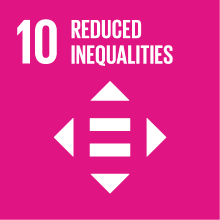HISTORY OF PHOTOGRAPHY
- Academic year
- 2019/2020 Syllabus of previous years
- Official course title
- STORIA DELLA FOTOGRAFIA SP.
- Course code
- FM0189 (AF:313053 AR:168052)
- Teaching language
- Italiano
- Modality
- On campus classes
- ECTS credits
- 6
- Degree level
- Master's Degree Programme (DM270)
- Academic Discipline
- L-ART/03
- Period
- 3rd Term
- Moodle
- Go to Moodle page
Contribution of the course to the overall degree programme goals
Expected learning outcomes
The students will acquire an in-depth knowledge of a series of questions related to the history and theory of photography, with a special focus on the practices of reappropriation, retouch and redistribution of images in the contemporary iconosphere.
2. Capacity of applying knowledge and understanding:
The students will learn how to approach the history and theory of photography from the vantage point of research perspectives which have developed during the last 10-15 years, such as visual culture studies and media studies. The students will also learn how to discuss some of the issues that will be tackled during the course through the writing of a paper.
3. Capacity of formulating judgments:
The students will learn how to develop original or partly original ideas and how to elaborate a critical judgment concerning certain aspects of the history and theory of photography, with a special focus on the topics discussed during the course.
4. Communicational skills:
Within the framework of seminar-like discussions, the students will learn how to articulate ideas with the appropriate language and share them with the professor and fellow students.
5. Learning skills:
The students will acquire the appropriate conceptual and analytical skills that will allow them to analyse the issues discussed in class. They will learn how to study and discuss texts (some of which in English) in a constant confrontation with the professor and fellow students, as well as how to write an academic paper, accompanied by notes, bibliography, images and captions.
Pre-requirements
Contents
Referral texts
• Claudio Marra, “L’immagine infedele. La falsa rivoluzione della fotografia digitale”, Bruno Mondadori, Milan 2006.
• Andrea Pinotti and Antonio Somaini, “Cultura visuale. Immagini, sguardi, media, dispositive”, Einaudi, Turin 2016.
2. To expand on the subjects covered during classes:
• Cristina Baldacci, ‘Re-enactment e altre storie. Dall’archivio alla contro-narrazione per immagini nell’arte contemporanea’, in “La rivista di engramma”, 150 (October 2017), pp. 41-48 (available here: http://www.engramma.it/eOS/index.php?id_articolo=3215 ).
• Cristina Baldacci, ‘Recirculation: The Wandering of Digital Images in Post-Internet Art’, in “Re-: An Errant Glossary”, ed. by C.F.E. Holzhey e A. Wedemeyer, ICI Berlin, Berlin 2019, pp. 25-33 (available here: https://doi.org/10.25620/ci-15_04 ).
• Cristina Baldacci, ‘Reenactment: Errant Images in Contemporary Art’, in “Re-: An Errant Glossary”, ed. by C.F.E. Holzhey e A. Wedemeyer, ICI Berlin, Berlin 2019, pp. 57-67 (available here: https://doi.org/10.25620/ci-15_07 ).
• Benjamin H.D. Buchloh, ‘Allegorical Procedures: Appropriation and Montage in Contemporary Art’, in “Artforum”, 21, 1 (September 1982), pp. 43-56 (available on Moodle).
• C. Chéroux, ‘“Hopefully There Is an Internet Connection!”: Seventeen Observations on Photo Sharing’, in “Snap + Share: Transmitting Photographs from Mail Art to Social Networks”, exhibition catalogue, Cernunnos, Paris 2019, pp. 7-13 (available on Moodle).
• Douglas Crimp, ‘Pictures’ (1977), in “October”, 8 (Spring 1979), pp. 75-88 (available on Moodle).
• Georges Didi-Huberman, ‘Rendere un’immagine”, in “aut aut”, 348 (October-December 2010), pp. 6-27 (available on Moodle).
• Tristan Garcia, ‘In Defence of Representation’ (2015), in “Picture Industry: A Provisional History of the Technical Image 1844-2018”, ed. by W. Beshty, exh. cat., Luma Foundation/CCS Bard, Zurich/Annandale-On-Hudson (NY), pp. 758-761 (available on Moodle).
• André Gunthert, ‘La culture du partage ou la revanche des foules’, in “L’image partagée. La photographie numérique”, Textuel, Paris 2015, pp. xxx (available on Moodle).
• Peter Osborne, ‘The Distributed Image’ (2015), in “Picture Industry: A Provisional History of the Technical Image 1844-2018”, ed. by W. Beshty, exh. cat., Luma Foundation/CCS Bard, Zurich/Annandale-On-Hudson (NY), pp. 772-775 (available on Moodle).
• Dieter Roelstraete, ‘Make it Re-: The Eternally Returning Object’, in “When Attitudes Become Form: Bern 1969/Venice 2013”, ed. by G. Celant, exh. cat., Fondazione Prada, Milan 2013, pp. 423-428 (available on Moodle).
NB: The complete programme will be presented and made available at the beginning of the course.
Non-attending students will bring, in addition to the programme indicated above, one of the following texts of their choice:
• Garance Chabert and Aurélien Mole (eds.), Les Artistes iconographes/Artists as Iconographers, Empire Books-Villa du Parc, Paris 2018.
• Charlotte Cotton, The Photograph as Contemporary Art, Thames & Hudson, London 2004.
• Maurizio Guerri and Francesco Parisi (eds.), Filosofia della fotografia, Cortina, Milan 2013.
• André Gunthert, L’image partagée. La photographie numérique, Textuel, Paris 2015.
• Claudio Marra, Fotografia e arti visive, Carocci, Rome 2014.
• Nicholas Mirzoeff, “How to See the World”, Pelican Books, London 2015.
NB: It is advisable to contact the professor in the case of specific requests or particular language needs to agree on a text of one’s choice other than the bibliography indicated above.
Assessment methods
NB: the paper will be carefully read and checked by the professor. The identification of obvious plagiarisms, with entire sentences or paragraphs copied from the Internet or from other sources, will cause the peremptory exclusion of the student from the oral exam.
Type of exam
Teaching methods
Further information
2030 Agenda for Sustainable Development Goals
This subject deals with topics related to the macro-area "Poverty and inequalities" and contributes to the achievement of one or more goals of U. N. Agenda for Sustainable Development




